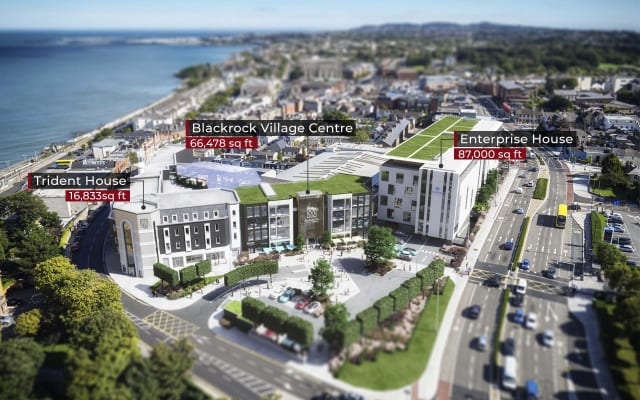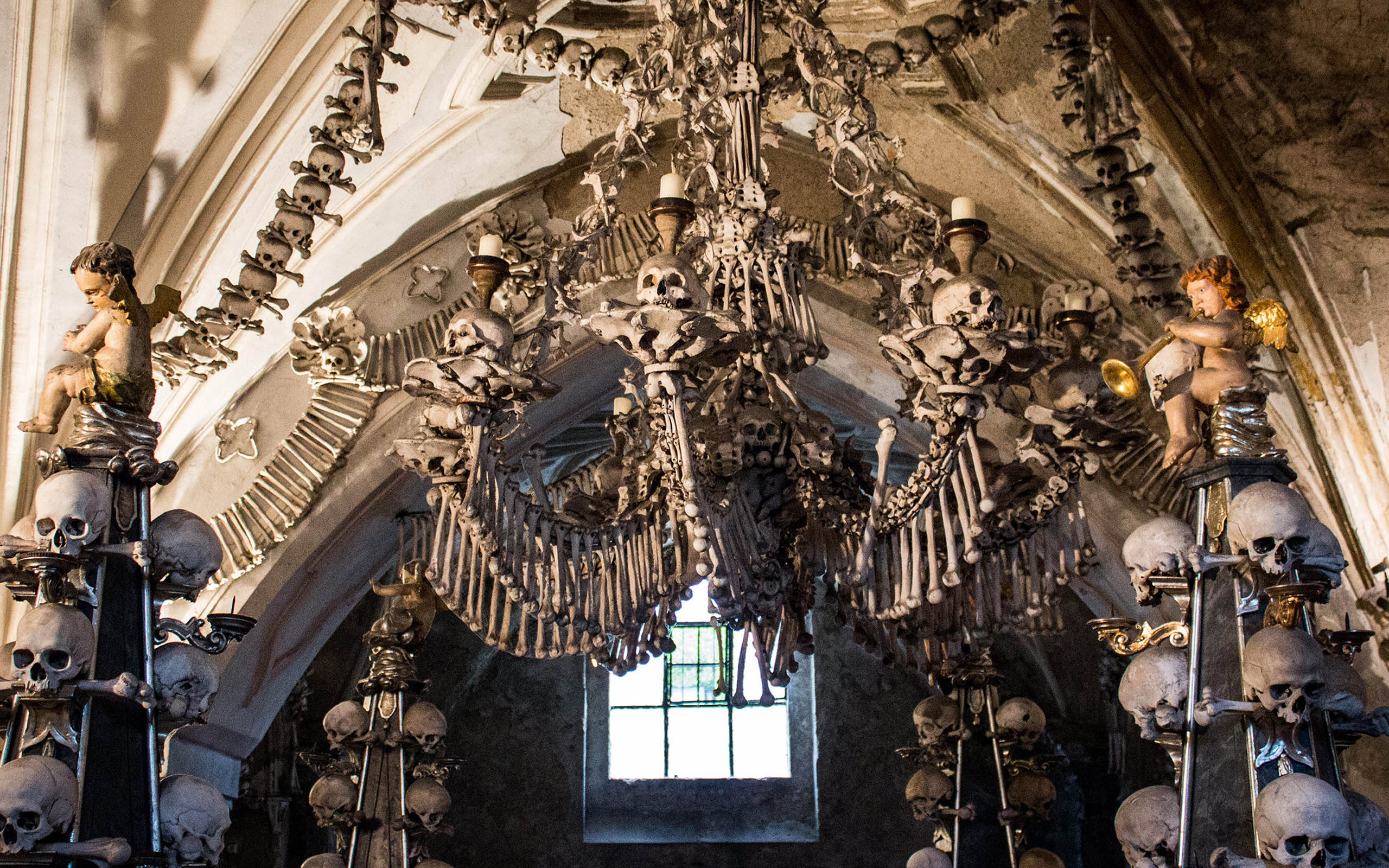Blackrock is undergoing a building boom after many years of inactivity with major commercial and retail developments on Frascati Road.

Love it or loath it – Halloween is here – and it means that images of witches riding brooms, scarecrows and poorly carved pumpkins are probably plaguing your news feed.
We’re taking a different route by playing to our strengths and exploring our top 10 list of creepy buildings and monuments that is sure to give you nightmares for weeks… or at least make for some intriguing lunch-time scrolling.
We had a virtual team catch up and decided our top 10 spooky picks. This resulted in a fine selection of both international and Irish attractions that left a lasting impression on our team.

First up, Nick, our MD, insisted that this HAD to be on the top of the list. High up in the Dublin Mountains, the Hellfire Club, is a long abandoned, eerie looking building. It’s the ruin of a small hunting lodge built by William Conolly in 1725 over a prehistoric burial mound.
By the 1740s the building was unoccupied and a club of “wild” young lords and gentlemen, barred from taverns they frequented in Dublin city, began renting it as a meeting place for their club. Such clubs were fashionable at the time and linked to excess drinking, gambling and often despicable behaviour and depravity. This one apparently drank toasts to the Devil and thus became known as the Hellfire club.
Rumour has it that one night a lone man knocked on the door seeking refuge. They allowed him in, and during a game of cards, one of the members of the Hellfire Club dropped his card. When he reached down to retrieve it, he looked at the man’s feet and saw that he had cloven hooves. Seeing this, the man immediately burst into flame. This flame started a fire that spread throughout the lodge, and you can still see the charred walls when you visit today.
Nick even reckons he witnessed some supernatural activity up there while hiking with his dog Snoop some years ago. He legged it down the hill in record time.

Kevin, our Digital Marketing Manager and self-acclaimed movie buff, submitted this unnerving entry: The cream-colored siding and traditional shutters make this Dutch Colonial Revival home appear cheery and comfortable.
Don’t be fooled. This house has a horrific history that includes grisly murders and claims of paranormal activity. The story became famous in Jay Anson’s best-selling novel, The Amityville Horror.

Caroline, our Accounts Manager, discussed her eerie experience when visiting Leap Castle in County Offaly.
The castle prides itself on being one of Ireland’s most haunted buildings. Still inhabited, its bloody history is steeped in murder, treachery, and violence. Today, Leap is occupied by the Ryan family, but they are not alone. Up to twenty ghosts are said to wander the halls and corridors of this ancient castle, and nothing or nobody can persuade them to leave.
The exact origin of Leap Castle has been lost in the mists of time. Some historians suggest that a fortification was built upon the site as early as the twelfth century.

“Chilling” is the word that Sinéad, our BID Manager, used to describe Peter Eisenman’s Memorial to the Murdered Jews of Europe, the Berlin Holocaust Memorial.
Even if you did not know the horrific history that inspired the structuralist memorial, you would sense it as you wandered the labyrinth of pathways between massive tomb-shaped stone slabs.

Next up, Danny, on our Post-Production Team, told us a few tales about his visit to Cork’s Lunatic Asylum. It was established in 1798 by William Saunders-Hallaran, the infamous inventor of the Hallaran’s Chair, a device that spun a hysterical patient at 100 revolutions per minute.
With the cruelty of this invention, one can only imagine the types of torture that were used on the patients when the asylum functioning. The voices of these patients can still be heard, and they have even been recorded by paranormal investigators.
Danny visited the building before it was closed to the public due to a fire that gut the building in 2017.

When asking Pawel, our Modelling Team Lead, about some creepy architecture, he said, “heard of the Church of Bones?”
Well, This is it. Around 50,000 human skeletons lie in this monastery, which has been deemed holy land and was once a popular burial site. But the bones aren’t in one huge, messy heap. They are—piece by piece—artfully woven into chandeliers, candelabras, candle-holders, and more.
Like Buddhist prayer flags, bones are also strung above. The design dates to 1870, when a local man was hired to take bones stored in a crypt and turn them into art.

Eric, a member of our BRE Daylight & Sunlight team and lover of Irish history, discussed a pre-lockdown trip to The Wicklow Gaol which has seen many acts of injustice and suffering.
From penning in thousands of prisoners during the Great Famine to jailing and torturing rebels during the 1798 Rebellion and the War of Independence.
Thousands of prisoners died here from starvation and disease, leading to it being known as the “gates of hell,” by those who found themselves on the wrong side of the wall.

Although Marcus, our Project Manager, has never been to The Hill of Crosses, he said that images of the monument always gave him the creeps… and we can see why.
Crosses began to appear atop a hill in this northern Lithuanian town following the 1831 uprising, which earned it the name the Hill of Crosses.
Between crosses, crucifixes, rosaries, and carvings, there are now more than 100,000 spanning on the hill. Despite the country’s Soviet Union occupation between 1944 and 1990, and organised removals by the government, the crosses have never completely gone away.

Richie, our Associate Director, reckons that the pictures of Downhill House does not give it justice.
Downhill House was a mansion built in the late 18th century for Frederick, 4th Earl of Bristol and Lord Bishop of Derry at Downhill. Much of the building was destroyed by fire in 1851 before being rebuilt in the 1870s. It fell into disrepair after the Second World War.
While Richie reckons that the location and design of the building is spectacular, some people had a conflicting opinion. After a visit in 1801, one visitor wrote of the location:
“It is impossible not to regret the misapplication of so much treasure upon a spot where no suitable Desmesne can be created…where the salt spray begins to corrode this sumptuous pile of Grecian Architecture, and the imagination anticipating the distant period weeps over the splendid Ruin, a sad monument of human folly.”

Last, and by no means least, Fabrizio, our BIM Lead, suggested a rather striking entry inspired by his trip to Croatia.
The eerie monument celebrates the uprising and resistance movement of the people of Kordun and Banija against Nazi-fascism and commemorates the victims of nazi-fascism, both civilian victims and fallen resistance fighters.
It is a World War II monument built on Veliki Petrovac, the highest peak of Petrova Gora, a mountain range in central Croatia. The site of the monument is shared between three municipalities: Gvozd and Topusko, in Sisak-Moslavina County and Vojnić, in Karlovac County.
Thank you for your message. It has been sent.